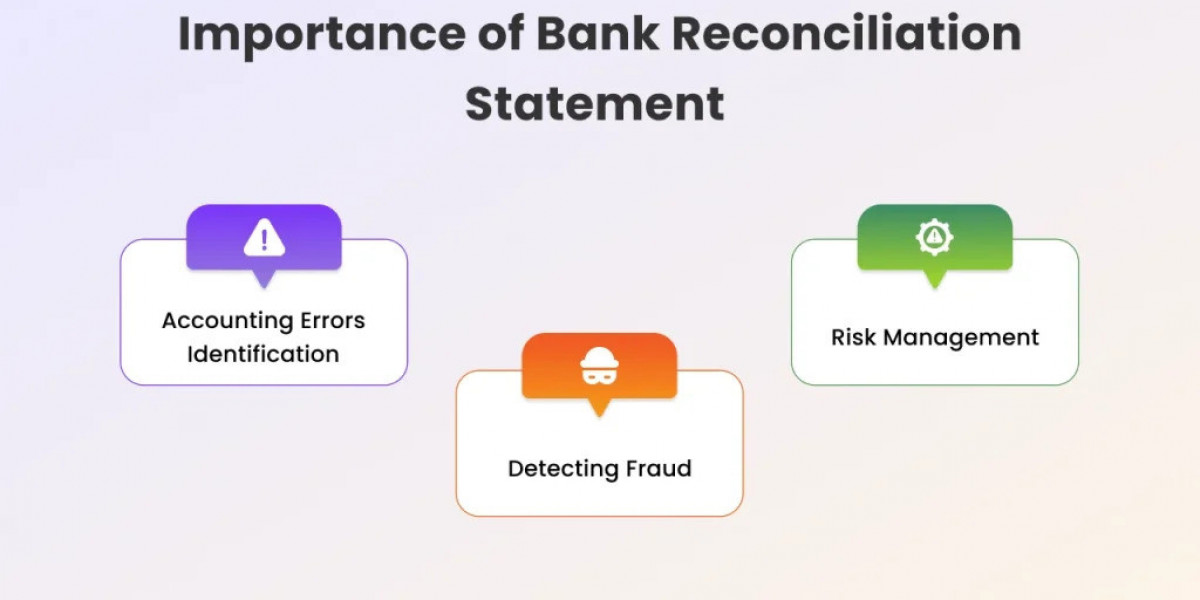Reconciliation is a fundamental accounting process that ensures the accuracy and integrity of financial records. It involves comparing two sets of records—such as bank statements and company ledgers—to identify and resolve discrepancies. While reconciliation helps maintain financial accuracy, it also carries inherent risks. Poorly managed reconciliation processes can lead to errors, fraud, compliance issues, and financial losses.
Risk management in reconciliation is therefore critical. Effective strategies not only safeguard your financial data but also improve efficiency, compliance, and stakeholder confidence.
Understanding the Risks in Reconciliation
Before diving into strategies, it’s important to understand the common risks reconciliation processes face:
Data Entry Errors: Manual input mistakes can cause mismatches or overlooked discrepancies.
Fraud Risks: Weak controls may enable manipulation of financial records.
Timing Issues: Delays in reconciliation can result in outdated or inaccurate reports.
Lack of Documentation: Poor record-keeping complicates audits and dispute resolution.
Inadequate Segregation of Duties: Allowing the same person to both record and reconcile increases fraud risk.
Technology Failures: Outdated or incompatible systems can cause errors or data loss.
Recognizing these risks is the first step toward mitigating them.
Top Strategies for Effective Risk Management During Reconciliation
1. Implement Strong Internal Controls
Internal controls form the backbone of risk management. This includes:
Segregation of Duties: Ensure different individuals handle recording, reconciliation, and approval. This reduces the risk of fraud or error going undetected.
Regular Reviews and Approvals: Supervisors should review reconciliation reports regularly to identify anomalies.
Standard Operating Procedures (SOPs): Define clear processes for reconciliation tasks and risk management to ensure consistency.
2. Leverage Automation and Technology
Manual reconciliation is prone to errors and inefficiencies. Adopting automation tools can drastically reduce risk:
Automated Reconciliation Software: Tools can automatically match transactions, flag exceptions, and generate reports, minimizing human error.
Real-Time Data Integration: Systems that sync financial data in real time reduce delays and discrepancies caused by outdated information.
Audit Trails: Automated systems provide detailed logs of all changes, enhancing transparency and accountability.
Investing in the right technology enhances accuracy and speeds up reconciliation cycles.
3. Maintain Comprehensive Documentation
Thorough documentation supports transparency and audit readiness:
Keep detailed records of all reconciliations, including identified discrepancies and resolution steps.
Use standardized reconciliation templates to ensure all necessary information is captured consistently.
Retain backup documentation such as bank statements, invoices, and payment records.
Proper documentation aids in investigations and helps prevent disputes.
4. Schedule Regular Reconciliations
Timely reconciliation limits risk by ensuring issues are identified and addressed quickly:
Establish a regular reconciliation schedule—daily, weekly, or monthly depending on transaction volume and business needs.
Avoid backlog accumulation, which can increase errors and delay detection of fraud or mistakes.
Consistent reconciliation ensures your financial data remains accurate and current.
5. Conduct Risk Assessments and Continuous Monitoring
Proactively identifying and monitoring risks helps prevent issues before they escalate:
Perform periodic risk assessments to identify vulnerabilities in your reconciliation process.
Monitor key risk indicators such as unusual transaction volumes or frequent mismatches.
Implement controls and adjust processes based on findings to mitigate emerging risks.
Continuous monitoring ensures your risk management remains effective over time.
6. Provide Training and Foster a Risk-Aware Culture
Human factors play a huge role in risk management:
Train staff regularly on reconciliation best practices, fraud awareness, and internal control policies.
Promote a culture of accountability and transparency where employees feel empowered to report discrepancies or suspicious activities.
Encourage collaboration between accounting, finance, and audit teams to share insights and improve controls.
Educated and vigilant teams are your best defense against reconciliation risks.
7. Establish Clear Escalation Procedures
Not all discrepancies can be resolved immediately. Clear protocols for escalation help manage risks effectively:
Define thresholds for when issues should be escalated to management or internal audit.
Document escalation workflows to ensure timely and appropriate responses.
Use issue tracking systems to monitor unresolved discrepancies until closure.
Escalation procedures ensure critical risks receive the attention they deserve.
8. Regularly Review and Update Policies
The financial environment and regulatory landscape evolve constantly:
Regularly review your reconciliation policies and controls to ensure they remain aligned with industry standards and compliance requirements.
Update procedures in response to changes in technology, business operations, or risk profiles.
Engage internal or external auditors to validate and improve your risk management framework.
Ongoing policy refinement strengthens resilience against emerging risks.
Conclusion
Effective risk management in reconciliation is essential to maintaining financial integrity, preventing fraud, and ensuring regulatory compliance. By implementing strong internal controls, leveraging technology, maintaining documentation, and fostering a risk-aware culture, accounting and finance teams can minimize errors and safeguard their organization’s assets.
Regular reconciliation, continuous monitoring, clear escalation protocols, and policy updates round out a comprehensive risk management strategy. These best practices help firms not only avoid costly mistakes but also build confidence among stakeholders, auditors, and clients.
In an increasingly complex financial landscape, prioritizing risk management in reconciliation is no longer optional—it’s a necessity for sustainable business success.








